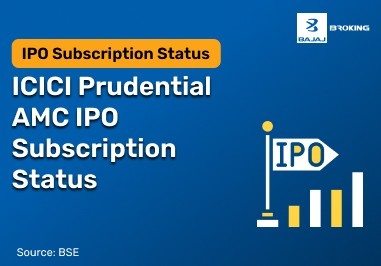Mutual funds are broadly classified into open-ended, closed-ended, and interval funds, depending on how frequently investors can buy or sell units. While open-ended funds are widely preferred due to their liquidity and flexibility, closed-ended funds are also gaining attention for their structured investment approach and potential benefits. Unlike open-ended funds, closed-ended mutual funds have a fixed maturity period and can only be purchased during the New Fund Offer (NFO) period. However, investors can trade these funds on stock exchanges, similar to stocks, providing an additional layer of liquidity.
This article explores what are closed-ended funds, how they work, their key features, advantages, disadvantages, and factors to consider before investing. Whether an investor aims for long-term capital growth or portfolio diversification, understanding the role of closed-ended mutual funds can help make informed investment decisions.
What Are Closed-Ended Funds?
Closed-ended funds are mutual fund schemes with a fixed maturity period, typically ranging from three to five years. Investors can subscribe to these funds only during the NFO period. After the NFO closes, purchasing or redeeming units directly from the fund house is not possible until maturity. However, these units are listed and traded on stock exchanges, allowing investors to buy or sell them at prevailing market prices.
How Do Closed-Ended Mutual Funds Work?
Closed-ended mutual funds are launched by an asset management company through a one-time New Fund Offer (NFO). Investors can buy units at a fixed price only during this initial offer period. Once the NFO ends, the fund is closed to new investors. The fund runs for a fixed period, and investors typically stay until maturity. However, units can be sold on the stock exchange before maturity if needed.
Units Are Offered Once During the NFO
Investors can buy fund units only during the New Fund Offer. After this period ends, no new units are created, and no fresh investments are accepted into the scheme.
Fixed Tenure with Lock-In
The fund has a pre-set maturity period, usually between 3 to 5 years. Investors cannot redeem their units directly from the fund before maturity.
Listed on the Stock Exchange for Trading
To exit before maturity, investors can sell their units on the stock market. Prices are determined by market demand and may differ from the fund’s actual NAV.
No Issuance or Repurchase After NFO
The fund doesn’t issue new units or buy back existing ones after the NFO. Entry or exit is only possible through exchange trading.
Redemption at Maturity Based on NAV
When the scheme matures, it is closed. The fund distributes money back to investors at the Net Asset Value (NAV) on the final day.
Features of Closed-Ended Funds
Closed-ended mutual funds have distinct characteristics that set them apart from open-ended funds. Here are some key features:
Fixed maturity period:
Closed-ended funds come with a predefined maturity period, usually ranging from three to five years. Investors must stay invested until maturity unless they choose to sell their units on the stock exchange.
Limited subscription period:
Investors can subscribe to these funds only during the New Fund Offer (NFO) period. Once the NFO closes, no new units are issued, and additional investors cannot enter the fund.
Listed on stock exchanges:
Since direct redemption from the fund is not allowed before maturity, these funds are listed and traded on stock exchanges, allowing investors to buy or sell units at market-driven prices.
Stable asset base:
Unlike open-ended funds, closed-ended funds do not experience frequent inflows and outflows, allowing fund managers to invest with a long-term strategy without worrying about liquidity pressures.
No Systematic Investment Plans (SIP):
These funds do not allow SIP investments, requiring investors to commit a lump sum amount during the NFO period. Investors can use a lumpsum calculator tool to estimate their potential corpus before investing.
Types of Investments in Closed-Ended Funds
Closed-ended mutual funds can be subdivided into two types based on where they invest. One type of closed-ended funds invest in bonds, while the other primarily invests in equities. These investments come with different risk-return dynamics, making them suitable for various types of investors.
Bond closed-end funds:
These funds predominantly invest in government bonds, corporate bonds, municipal bonds, and other fixed-income securities. Since investing in bonds provide regular interest payouts, closed-ended bond funds are often preferred by conservative investors seeking stable income. However, these funds are subject to market risk and credit risk. Market risk arises when interest rates increase, reducing the value of bonds in the fund’s portfolio. Credit risk refers to the possibility that the bond issuer may default on interest payments. Typically, longer maturity bonds are more sensitive to interest rate changes, leading to fluctuations in the Net Asset Value (NAV) of the fund.
Equity closed-end funds:
These funds invest primarily in stocks of companies across different sectors, offering investors capital appreciation over the long term. However, they carry higher risk compared to bond funds, as the NAV and market price of these funds fluctuate based on stock market performance, industry trends, and economic factors. The price of an equity closed-end fund is affected by the financial health of the companies it holds, changes in business operations, and overall stock market conditions. Investors in these funds should have a higher risk appetite and a long-term investment horizon to ride out market volatility.
Advantages of Closed-Ended Mutual Funds
Stable asset base
In closed-ended mutual funds, investors cannot redeem units before maturity, ensuring a fixed asset base for fund managers. Without frequent withdrawals, managers can focus on long-term strategies without maintaining excess liquidity. This allows them to invest in high-growth opportunities and align investments with the fund’s objectives, improving potential returns while minimizing short-term market disruptions.
Potential for higher returns
Closed-ended mutual funds offer potential for higher returns as fund managers can invest in long-term growth assets without worrying about sudden redemptions. With a fixed asset base, they can allocate funds to less liquid, high-yield investments such as small-cap stocks, long-term bonds, or emerging market opportunities, aiming for better capital appreciation over time.
Market pricing opportunities
Similar to equity shares, closed-ended mutual fund units are traded on the stock exchange, where prices are determined by demand and supply. Higher demand with limited supply drives prices above the Net Asset Value (NAV).
Disadvantages of closed-ended mutual funds
- Historically lower returns compared to open-ended funds
While closed-ended mutual funds provide fund managers with a stable asset base to execute long-term strategies, historical data shows that they have not consistently outperformed open-ended schemes. The lack of flexibility and liquidity constraints often limit their ability to generate good returns over time. - Requires a lump sum investment
Investors can only purchase units during the New Fund Offer period, requiring a one-time lump sum investment. This increases risk, as there is no option to spread investments over time through systematic investment plans. Market fluctuations can significantly impact returns, making timing crucial when investing in these funds. - Limited performance track record before investment
Unlike open-ended mutual funds, closed-ended funds do not have an established track record before their launch. Investors cannot analyze past performance across market cycles, making it difficult to assess the fund’s consistency. The fund’s success largely depends on the decisions made by the fund manager, increasing the reliance on professional expertise.
Who Should Invest in a Closed-Ended Mutual Fund?
Now that you know what closed-ended mutual funds are and their various benefits and pitfalls, it becomes easier to understand the suitability of these investment vehicles. Since closed-ended funds do not offer redemption until maturity and require a substantial initial investment, they may be better suited for the following categories of investors:
Long-term investors:
Those with specific financial goals aligning with the fund's maturity period. For instance, long-term investors seeking to build a retirement corpus can consider closed-ended funds alongside structured plans like the NPS scheme.
Experienced investors:
Individuals comfortable with stock market basics and trading on exchanges, who can take advantage of pricing dynamics to sell the units for a profit.
Investors seeking portfolio diversification:
Those looking to diversify their investment portfolio with a mix of assets.
How to Evaluate Closed-Ended Funds Before Investing?
Investing in closed-ended mutual funds requires careful evaluation to ensure they align with an investor’s financial goals and risk appetite. Since these funds have a fixed maturity period, investors must assess their potential returns, liquidity constraints, and management quality before committing capital. Here are key factors to consider before investing:
Risk-adjusted returns
Analyze the fund’s ability to generate returns relative to the risks taken. Comparing the Sharpe ratio and standard deviation of a closed-ended fund with similar funds helps determine if the risk-reward balance is favorable.
Benchmark comparison
Evaluate how the fund’s performance compares to its benchmark index. If the fund consistently underperforms its benchmark, it may not be a suitable investment option. A consistent outperformer indicates strong investment strategies and market adaptability.
Relative performance with peers
Compare the fund’s returns with similar closed-ended funds in the market. Understanding whether the fund has outperformed or underperformed its peers helps gauge its investment potential and effectiveness of the fund management strategy.
Quality of stocks in the portfolio
Assess the portfolio composition to determine if the fund invests in high-quality stocks. Funds with strong fundamental stocks generally offer better long-term stability, whereas exposure to highly volatile or speculative assets may increase risk.
Track record and competence of the fund manager
Since closed-ended mutual funds are heavily reliant on fund managers, reviewing their experience, past fund performance, and investment style is crucial. A fund managed by a seasoned professional with a proven track record may provide better returns over the investment horizon.
Key Factors to Know Before Investing in Closed-Ended Mutual Funds
Before investing in mutual funds with a closed-ended orientation, investors must consider the following factors:
Lock-in period:
Understand the fund's maturity period and your ability to remain invested for that duration. Choose funds that have maturity periods that align with your investment horizon and goals.
Market risks:
Recognize that investments are subject to market fluctuations affecting NAV and trading prices.
Tax implications:
Be aware of the tax treatment on capital gains from these funds.
How to Invest in Closed-Ended Funds?
Investing in closed-ended mutual funds involves specific steps due to their unique structure and trading mechanisms. Here's a step-by-step guide to help you navigate the investment process:
Choose an investment platform
Investors can invest directly with an asset management company (AMC) or through agents and distributors. Direct investments through AMCs provide more units as they do not involve distributor commissions. Those who prefer guidance can invest through mutual fund distributors or financial advisors.
Select a closed-ended fund
Researching available closed-ended mutual funds is essential before investing. Investors should assess factors such as the fund’s investment objective, past performance, risk profile, and management team. Since closed-ended funds do not allow new subscriptions after the new fund offer (NFO) period, careful evaluation is necessary before committing funds.
Invest during the new fund offer (NFO)
Closed-ended funds are only available for subscription during the NFO period. Investors can apply online through the mutual fund company’s official website or opt for offline investment through registered distributors and financial advisors. Once the NFO closes, units can only be purchased in the secondary market on stock exchanges.
Use an online portal
Many AMCs and mutual fund platforms provide online investment options. Investors can visit the AMC’s official website, complete the KYC process, and invest seamlessly. Online investments provide a convenient and faster method for subscribing to closed-ended mutual funds.
Receive fund units and track performance
After investing, fund units are allotted based on the NAV at the end of the NFO period. Investors can track fund performance via the AMC portal or stock exchange listing if the fund is traded in the secondary market. Since closed-ended funds have a fixed maturity period, investors must monitor their holdings and be prepared for redemption at maturity.
List of Popular Closed-Ended Funds in India
Closed-ended mutual funds in India offer investors opportunities to participate in diversified portfolios with a fixed maturity period. Below is a table highlighting some popular closed-ended funds, along with their 1-year, 3-year, and 5-year returns:
Scheme Name
| AMC
| Type
| Launch Date
| Maturity Date
| Minimum Investment
| Exit Option
| Investment Focus
|
Nippon India Fixed Horizon Fund XXXVIII - Series 6
| Nippon India Mutual Fund
| Debt
| March 2019
| March 2026
| ₹5,000
| Listed on stock exchanges
| Fixed income securities maturing on or before the maturity date
|
SBI Debt Fund Series C - 10
| SBI Mutual Fund
| Debt
| February 2020
| February 2025
| ₹5,000
| Listed on NSE
| AAA-rated corporate bonds and government securities
|
HDFC Fixed Maturity Plan - Series 44
| HDFC Mutual Fund
| Debt
| January 2020
| January 2025
| ₹5,000
| Listed on BSE
| Corporate bonds, government securities and money market instruments
|
ICICI Prudential Fixed Maturity Plan Series 87
| ICICI Prudential Mutual Fund
| Debt
| March 2021
| March 2026
| ₹5,000
| Listed on stock exchanges
| High-quality debt instruments maturing on or before the scheme maturity
|
Aditya Birla Sun Life Fixed Term Plan - Series RO
| Aditya Birla Sun Life Mutual Fund
| Debt
| February 2020
| February 2025
| ₹10,000
| Listed on NSE
| Portfolio of debt and money market securities
|
Taxability of Closed-Ended Mutual Funds
Equity-oriented funds
If a closed-ended mutual fund invests 65% or more of its assets in equity and equity-related instruments, it is classified as an equity-oriented fund for tax purposes. If the units are held for less than twelve months, a 20% short-term capital gains tax is applicable. For units held more than twelve months, a long-term capital gains tax of 12.5% is applicable (with an exemption for gains up to ₹1.25 Lakhs per financial year).
Debt-oriented funds
For closed-ended mutual funds that invest less than 65% of their assets in equity instruments, focusing primarily on debt securities, the tax treatment is different. The Finance Act 2023 removed the indexation benefit for debt mutual funds purchased on or after April 1st, 2023. Consequently, all capital gains from these funds are now taxed at the investor's applicable income tax slab rate, regardless of the holding period.
Why Use Closed-Ended Funds in Your Portfolio?
Diversification
Closed-ended mutual funds provide exposure to a mix of asset classes such as equities, debt instruments, and alternative investments, allowing investors to spread risk across different sectors.
Stable investment horizon
Since these funds have a fixed maturity period, investors are encouraged to stay invested for the long term, reducing impulsive selling and benefiting from market upswings over time.
Professional management
Unlike direct stock market investing, these funds are managed by professional fund managers, who select investments based on market trends, economic conditions, and growth potential.
Potential for good returns
As the corpus remains locked in for a specified period, fund managers have the flexibility to invest in less liquid or long-term growth assets, which can generate better returns compared to open-ended funds.
Trading opportunities
Since closed-ended funds are listed on stock exchanges, investors can buy or sell units based on market price fluctuations, sometimes purchasing units at a discount to their Net Asset Value (NAV).
Conclusion
Closed-ended mutual funds offer a structured investment approach suitable for long-term investors who prefer a fixed holding period and professional management. While they provide opportunities for diversification and potential capital appreciation, investors should assess market risks, liquidity constraints, and tax implications before investing. Understanding what are closed-ended funds, evaluating fund performance, and aligning investments with financial goals can help investors make informed decisions. Those looking for flexible, professionally managed investments may also explore options like ETFs or open-ended mutual funds.
Disclaimer: Investments in the securities market are subject to market risk, read all related documents carefully before investing.
This content is for educational purposes only. Securities quoted are exemplary and not recommendatory.
For All Disclaimers Click Here: https://bit.ly/3Tcsfuc













